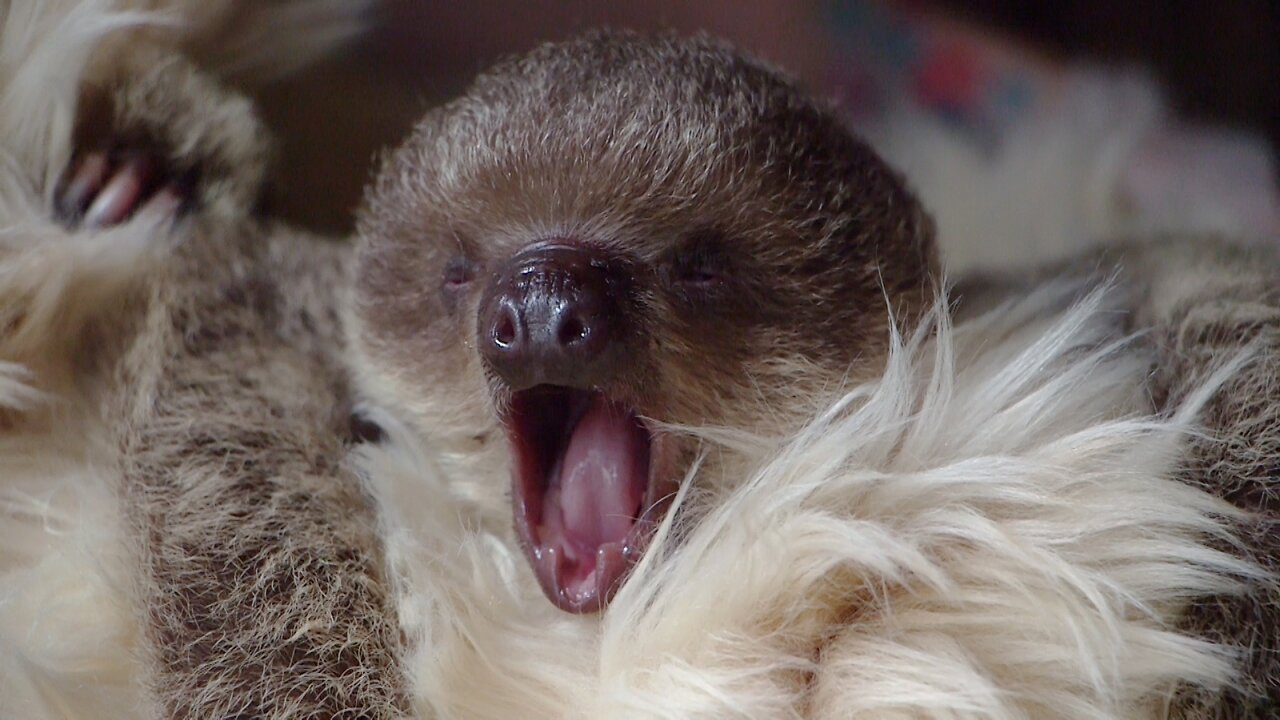Premium Only Content

Cute Baby Sloths Being Sloths - FUNNY Compilation
Baby sloths, also known as sloth babies or sloth infants, are adorable and fascinating creatures that capture the hearts of many animal lovers. Sloths belong to the family Bradypodidae and are native to the rainforests of Central and South America. They are well-known for their slow movements, hence the name "sloth," and spend most of their lives hanging upside down from trees.
Here are some interesting facts about baby sloths:
Birth and Development: Baby sloths are typically born after a gestation period of about 4 to 6 months. The mother gives birth to a single baby, and the young sloth is known as a "slothlet." At birth, a slothlet is tiny, usually weighing just a few hundred grams.
Attachment to the Mother: Baby sloths stay with their mothers for an extended period. They cling to their mother's belly for the first few weeks, and later they may ride on her back as she moves through the trees. The mother's fur provides a safe and comfortable environment for the baby.
Slow Growth: Sloths grow slowly, and it takes them several months to develop and gain strength. They start to explore the world around them by clinging to their mother as she moves through the canopy.
Diet: While they are young, baby sloths rely on their mother's milk for nourishment. As they grow, they gradually transition to a diet similar to adult sloths, which mainly consists of leaves, buds, and fruits. This diet is low in nutrients, leading to their slow metabolism and sluggish behavior.
Vulnerable Period: During the first year of life, baby sloths are vulnerable to predation, especially from eagles, large snakes, and wild cats. To protect their young, sloth mothers are very attentive and try to keep them hidden among the dense foliage.
Independence: Baby sloths become more independent as they grow older, eventually venturing away from their mother to find their own territories. This transition period can be challenging for the young sloth, as they have to learn to survive on their own.
Conservation Status: Sloths face various threats, including habitat loss and illegal pet trade. Conservation efforts are in place to protect these fascinating creatures and their habitats to ensure their survival in the wild.
Sloth Sanctuary: There are several sloth sanctuaries and rehabilitation centers in Central and South America dedicated to rescuing and caring for injured or orphaned sloths. These sanctuaries play a crucial role in rehabilitating sloths and releasing them back into the wild when possible.
Please note that interacting with or keeping sloths as pets is not appropriate, as they are wild animals with specialized needs that are best met in their natural habitat. If you encounter a sloth in the wild, it's essential to observe from a distance and avoid disturbing them.
The credit of this video belongs to a YouTube chanel called Animal Scoops, This video is a reupload to keep spreading joy.
Like & Subscribe
Bananalmo ;)
-
 LIVE
LIVE
Candace Show Podcast
52 minutes agoEXCLUSIVE! Brigitte Macron's Lawyer Has A Dark Past. Dan Bongino Speaks Out. | Candace Ep 220
2,864 watching -
 1:18:11
1:18:11
Redacted News
40 minutes agoScotland is being DESTROYED and Neil Oliver is trying to save it
2.08K3 -
 1:11:04
1:11:04
vivafrei
2 hours agoWhat Did Bongino See? The Epstein "Privilege"! Canada Has Become a Dangerous JOKE & MORE!
77.3K38 -
 2:07:48
2:07:48
The Quartering
4 hours agoToday's Breaking News With Josie The Red Headed Libertarian, Hannah Claire & Luke Rodkowski
111K22 -
 LIVE
LIVE
Akademiks
3 hours agoDrake Tries for another #1?? Kodak vs YB still? Ksoo gets snitched on. Doechii plz stop botting
1,140 watching -
 LIVE
LIVE
The HotSeat
1 hour agoHate Crimes In Cincy + Hiring A White Girl Makes You A NAZI?!?!
663 watching -
 25:24
25:24
Stephen Gardner
1 hour ago🔥 RFK Just SHUT DOWN a DISTURBING Problem!
9.35K5 -
 LIVE
LIVE
Film Threat
6 hours agoVERSUS: SUPERMAN VS. THE FANTASTIC FOUR | Film Threat Versus
111 watching -
![[Ep 715] The Trump Way: Deals & Peace | Hate Crimes – Brutal Beat Downs | CA Homeless Money Scam](https://1a-1791.com/video/fww1/f5/s8/1/6/3/j/6/63j6y.0kob-small-Ep-715-The-Trump-Way-Deals-.jpg) LIVE
LIVE
The Nunn Report - w/ Dan Nunn
1 hour ago[Ep 715] The Trump Way: Deals & Peace | Hate Crimes – Brutal Beat Downs | CA Homeless Money Scam
228 watching -
 2:36:55
2:36:55
Nerdrotic
6 hours ago $2.94 earnedCancel Kurtzman Trek | The Fate of the Superhero Film - Nerdrotic Nooner 502
43.7K2